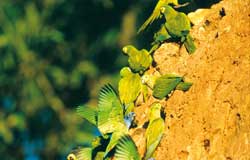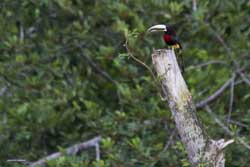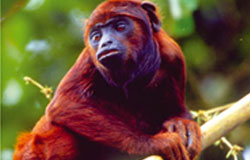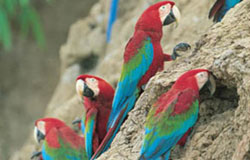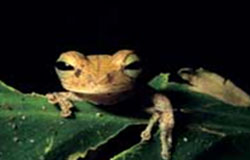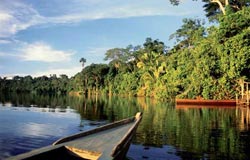Day 1: Cusco to Cock of the Rock Lodge
Our overland journey begins at 3,400m/11,150 ft, with an early departure from the highland city of Cusco. Today’s destination is the lush cloud forest region where the Andes fall away to the Amazon basin. This is a day of scenic drama and striking contrasts. We first visit a mountain wetland habitat teeming with migrant and local waterfowl, before crossing two mountain ranges between the Cusco valley and the Paucartambo valley, to a maximum altitude of 3,900m/12,790ft. Finally, we follow a sinuous ribbon of highway on its plunge through an extraordinary world of forested cliffs, waterfalls and gorges. We take leisurely stops to see mountain villages, a hilltop necropolis of chullpas (pre-Inca burial chambers), and the abrupt ridgetop of Ajanaco, which marks the final high point where the Andes begin their swoop into the Amazon basin.
In clear weather, we will see a breathtaking panorama of cloud forest and mountain giving way to the lowland rainforest plains far below us.
After a lunch near here we descend through the startling and rapid environmental transformations characteristic of the tropical Andes, passing from grassland and stunted trees through elfin forest, until we wind through a lush and magical world of overhanging trees, giant ferns, monster begonias, countless orchids and bromeliads, and a diverse and teeming birdlife.
We make frequent spontaneous stops, perhaps spotting a brilliantly feathered quetzal, a trogon, or the wild turkey-like Guan. We reach the comfortable Cock-of-the-Rock Lodge in the late afternoon, the best hour to visit the nearby viewing platform for the display ground, or “lek”. We have a chance to see Peru’s dazzling national bird, the Cock-of-the-Rock (Rupicola peruvianus). (Box Lunch, D).
